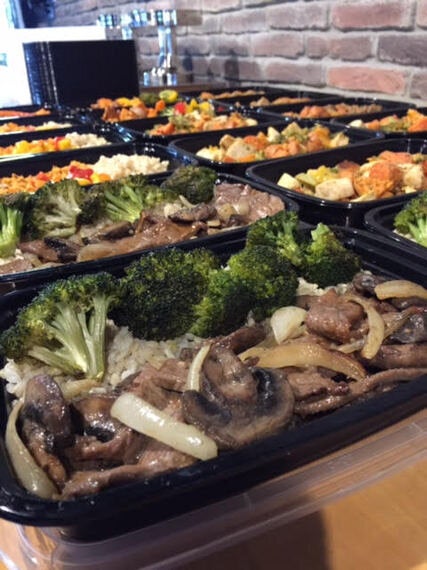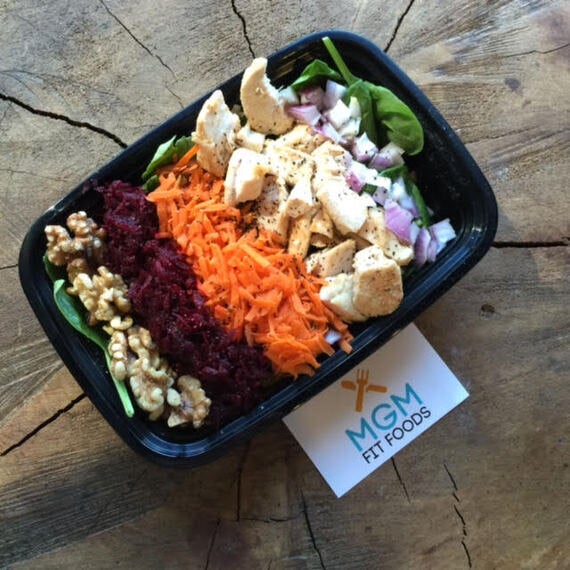If you follow popular media, you have likely seen the diet trends come and go over the past few decades. It can be confusing and complicated to determine the best approach to healthy eating.
The Paleo Diet isn't just a diet trend. It's actually the world's healthiest diet because it focuses on foods humans are genetically adapted to eat. The Paleo Diet includes everyday foods that mimic the diets of our pre-agricultural, hunter-gatherer ancestors.
Eating Paleo means choosing foods with more protein and fewer carbohydrates and sugars, as well as fibre from non-starchy vegetables and fruits (instead of whole grains) and more monounsaturated and Omega-3 fats ('good' fats from foods like avocadoes, many nuts and healthful oils like coconut and olive oil).
Here's a basic overview of what to eat on The Paleo Diet:
EAT:
•Grass-produced meats
•Fish/seafood
•Fresh fruits and veggies
•Eggs
•Nuts and seeds
•Healthful oils (Olive, walnut, flaxseed, macadamia, avocado, coconut)
DON'T EAT:
•Cereal grains
•Legumes (including peanuts)
•Dairy
•Refined sugar
•Potatoes
•Processed foods
•Salt
•Refined vegetable oils
Taming the transition
It looks easy enough, but many people are concerned about making a complete switch to a new way of eating like The Paleo Diet.
While the health benefits are significant, many are worried they won't be able to stick with the new diet and will fall back into their old patterns, or just won't know how to choose the right foods.
To ease the transition, I recommend individuals employ the '85:15 Rule' as they adapt from a standard North American diet and to help deal with the carb and sugar cravings, not to mention the deep fried foods and sodium.
With the 85:15 rule, you can stick to Paleo choices for most of your meals and have up to three 'cheat meals' a week. This kind of transition guideline can support healthier lifelong eating because it doesn't drastically eliminate favourite foods or drinks that were part of your former dietary regime.
Handling the hurdles
The Paleo Diet is basically about making smart choices to eat whole foods and minimize refined sugars, vegetable oils and salt. But for many good-intentioned people, challenges arise as they look to make adjustments to their diet.
Here are some of the most common challenges and misperceptions people face when switching to The Paleo Diet and suggested ways to address them.
1. Temptation to indulge at work and on weekends
You may find it easier to stick with your diet intentions during the week when there are routines and you have built in time for regular grocery store runs. Try to structure your meals on weekends to match your workdays and remember the 85:15 rule, which will allow you some leeway for special occasions and trips to your favourite restaurant.
2. Limited meal options and recipes
The keys to success when it comes to making the switch to a Paleo are food options and availability. Make sure you have an abundance of different Paleo-friendly food options on hand. Check out www.thepaleodiet.com/recipes for lots of great recipes that will help structure your food shopping and introduce variety into your meal options.
3. Carb and sugar cravings
Try to introduce healthier foods in place of your favourite sugary desserts. Berries and other succulent fruits make a great dessert. Pre-portioned raw nut/dried fruit mixes are easy snacks to combat sugar cravings. You can also try gentle sweeteners like Stevia, raw honey or maple syrup, or spices like cinnamon to add sweetness to dessert foods. If you can't resist, choose a piece or two of very dark, organic, chocolate.
If carbs are your thing, opt for more nutrient dense, substitutes. Try spaghetti squash instead of pasta, or sweet potato instead of regular potatoes or rice.
4. Paleo foods cost more
The Paleo Diet is sometimes dismissed as elite and only for those who can afford prime cuts of meat. Like our cave man ancestors, we need to look at the most efficient, nutrient-dense approach to food. Consider buying less expensive cuts of meat and cooking in a slow cooker to maximize taste and tenderize the meat. If you can't afford organic, opt for the conventional form of vegetables at the grocery store. Consider buying small, oily fish like sardines, anchovies and mackerel at the fish counter. These fish are rich in omega-3 and won't break the bank.
Going Paleo takes some planning and learning but the results are significant when it comes to health, weight loss and energy levels. Once you understand the principles, the transition can be relatively easy and you'll start to notice the positive effects of evolution-based eating.
Mandy Gill will speak at the canfitpro world fitness expo on August 14 and 15 in Toronto. Her presentation is entitled Get Pep from the Prep! Paleo Meal Prepping.


ALSO ON HUFFPOST:
